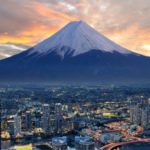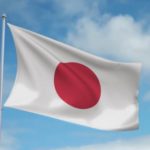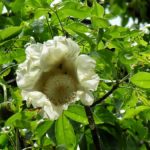Hanami
 Hanami or the festival of cherry blossoms – the national holiday of Japan. It is held annually during the flowering of the sakura tree common in Japan. The time of the Hanami is not constant, it depends on weather conditions, usually it is the end of March and the beginning of April. Since in the south of Japan, Sakura blooms earlier, and in the north later. These days, the Japanese with their families go to places where sakura grows and admire the flowering, arranging original picnics in nature.
Hanami or the festival of cherry blossoms – the national holiday of Japan. It is held annually during the flowering of the sakura tree common in Japan. The time of the Hanami is not constant, it depends on weather conditions, usually it is the end of March and the beginning of April. Since in the south of Japan, Sakura blooms earlier, and in the north later. These days, the Japanese with their families go to places where sakura grows and admire the flowering, arranging original picnics in nature.
Sakura – a kind of national symbol of Japan. This, so briefly blossoming tree, in Japan, devoted a great many poems and songs. The flowering time of the Japanese is considered special. These days everything is covered with amazing white and pink flowers.
The people rejoice and try to spend these days in the best way possible, bring joy to their families and friends and enjoy the arrival of spring itself. All the gardens of the Land of the Rising Sun, which is quite enough, despite the fact that the land is what the Japanese have always lacked, is incredibly transformed.
It seems that thousands of trees are shrouded in clouds or covered with flakes of snow. In the country, at this time, the Hanami festival is celebrated everywhere, which in translation from Japanese means “viewing flowers”.
Where did such a veneration of this rather common in other countries come from? What is the reason? In Buddhism, this phenomenon of such short-term flowering of sakura is considered a kind of symbol, a constant reminder to people of frailty and inconstancy of life. Indeed, sometimes a small gust of wind is enough, and delicate flowers, not yet fully blooming, will fall to the ground.
In ancient writings already in the seventh century, since the rule of the Tang dynasty, it was mentioned that the feast of the Hanami was held at that time by members of the imperial family. Since in the Land of the Rising Sun, the emperor was idolized and tried to imitate him in everything, this holiday began to be celebrated, close to the imperial family, to know, then samurai began to celebrate it, and then the entire population of the empire. Treats were prepared for this day, poems and songs were written, feasted and entertained, praising God for the joy in the form of this beautiful bloom of nature.
Over the centuries, this unusual holiday has become a national tradition. Sakura blossoming meant for all people not only the arrival of spring, but also the beginning of the time of planting rice, it was identified with the future rich harvest. The Japanese believed in the power of cherry blossoms, worshiped him as a deity, presented him with ritual gifts.
To strengthen this tradition, during the time of the Tokugawa dynasty, it was ordered to plant plum trees in all the lands of the empire. The blossoming sakura, at some time, began to be considered a symbol of real samurai and their way of life. This was the reason that in the 19th century, in the era of “enlightened government” and the reforms of Emperor Mutsuhito Meiji, sakura, as a symbol of feudalism, was ruthlessly cut down. But time passed, and the holiday of “admiring the flowers of sakura” was revived again, but already as a symbol of the new life of the Japanese people. Today, Hanami is one of Japan’s most beloved national holidays.
Actually, Sakura, although it refers to cherry, does not give fruit, it is a purely decorative tree. There are quite a few varieties, but the most famous is the someyoshino variety, blooming with white flowers, and weeping sidaresakura, which has pink flowers. The Japanese believe that the most beautiful sakura grows in Kyoto, in Nara and Kamakura.
The time when the sakura begins to bloom is almost impossible to determine. Moreover, the Japanese islands are located in subtropical and in temperate latitudes. In southern Okinawa, Sakura often begins to bloom in late January, early February, and in northern Hokkaido, sakura sometimes blooms only in May. In addition, the duration of flowering sakura often changes. In a warm year, the cherry begins to bloom a week, two earlier, in a cold year for the same period later.
It is believed that in Tokyo, Sakura blooms from March 27 to April 7, and in Osaka – from April 5 to 13. So the flowering season can last almost a month, gradually moving from south to north of the country. Often, wealthy Japanese move after, and participate in festivals in several regions.
Sakura flowers are usually open for no more than a week, so predictions of sakura blossoms are very popular among Japanese people. Meteorologists constantly monitor the “Sakura Blossom Front.” This is written in newspapers, reported on television, give information on social networks.
The celebration of Hanami in Japan is universal. No Japanese will miss the flowering of sakura, for no reason. Usually, you can admire the flowering of sakura in families or in the company of relatives and friends. Moreover, it is, so to speak, a legitimate excuse to leave work early and have fun in the company of colleagues. Some companies are organized by the khans as corporate parties for their employees in order to rally the team.
People are easily located on the grass in parks, gardens and squares. They organize picnics here on the ground, laying blankets or rugs on the lawns. Often a certain company chooses a place for its picnic ahead of time and in the morning sets a sentry who watches before they arrive so that others will not take it.
Improvised “tables” are served with food and drinks, in honor of the Khans, many drink sake, but often other fun drinks. Quite often, picnics take place at night, and then, in the light of specially hung lanterns, the blossoming sakura is especially beautiful.
At this time, the mass of tourists willing to take part in this event rushes to Japan at the time of the Hanami celebration. This is perhaps the peak of the influx of foreigners. But the Japanese are usually prepared for this, freeing up places in hotels by this means, often even evicting their fellow tribesmen. Holiday – holiday, and business – business. For one week, “hanami” enterprising Japanese make two-month earnings.
In Tokyo, for the time being, the celebration of the “Hanami” establishes a special headquarters that directs the entire picture of the holiday. Headquarters lets you know in the media about the beginning of the flowering season in each city. The official hanami begin in Tokyo’s Shinjuku Central Park. The feast is opened by the imperial family, government members and celebrities. Often among the invited heads of other states.



























